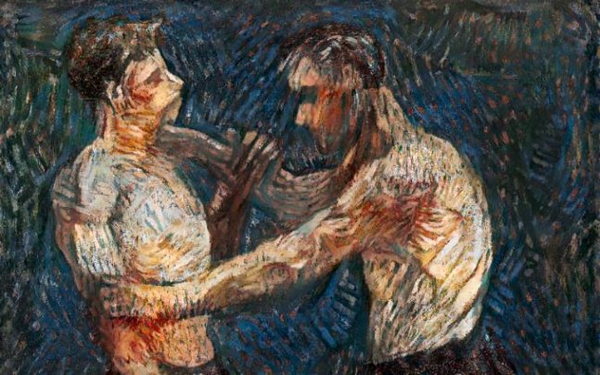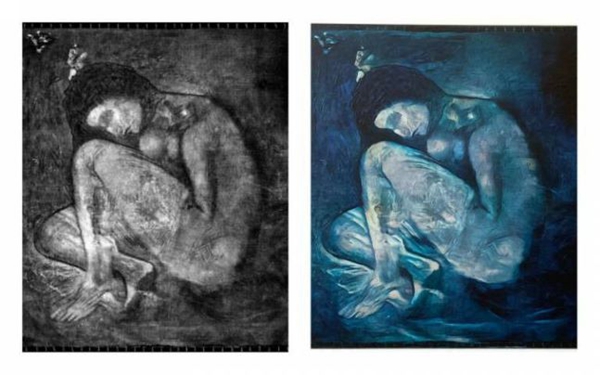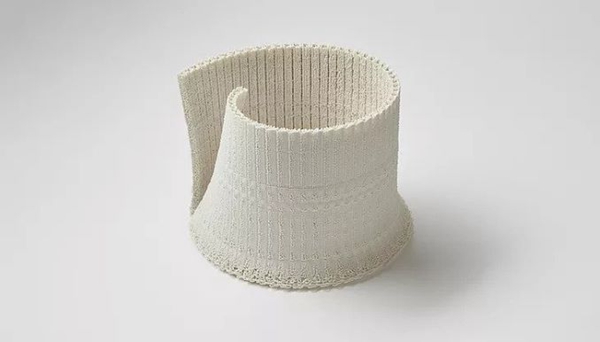Researchers at University College London (UCL) have combined X-ray, artificial intelligence (AI) and 3D printing technology to reproduce a lost Van Gogh painting, Mohou.com has learned recently.
Researchers at University College London (UCL) have combined X-ray, artificial intelligence (AI) and 3D printing technology to reproduce a lost Van Gogh painting, Mohou.com has learned recently.

UCL researchers' 3D-printed recreation of two wrestlers. Image from University College London.
Working with artist Jesper Eriksson, PhD students Anthony Bourached and George Cann wanted to recreate the painter's classic by using X-ray imaging principles to see through the painting's painted surface. This data can then be fed into an AI algorithm capable of inferring the artist's style and 3D modeling an artwork to reproduce it. Applying this process to Van Gogh's paintings, the researchers found that it was possible to reproduce one of his lost works, namely "Two Wrestlers. Although it is not yet possible to verify the accuracy of the work, it does not matter, this is already an important step forward in the reproduction of artworks. Bouached, who studies machine learning and behavioral neuroscience at University College London, says, "There's no way to tell how similar it is to the original painting yet because we don't have the right information, but so far it's the best guess you can get with current technology."
Bringing lost artwork to life
This recreation of Van Gogh's work by Eriksson and Bourached is the latest in a series of re-imaginings they have developed. Since 2019, the researchers have been working to bring lost paintings back to life and, they use a series of algorithms to identify a given work before creating a graphic outline identified by X-ray data. The resulting data is fed into a neural network through which painting styles, for example, can be learned from the artist's past works to predict the appearance of the work to be reproduced, even down to color and brushstrokes, laying the groundwork for 3D printable replicas.
Using this technology, the team has reconstructed many lost works of art, and in 2021, researchers at University College London were able to replicate Pablo Picasso's "Blind Man's Meal," which was hidden beneath one of his "Blue Period" paintings, an unfinished artwork of a squatting nude woman.
Bourached claimed at the time, "I believe Picasso supported us in doing the reproduction of the painting in this way, because he himself said, 'I just painted the image that surfaced before my eyes. It is for others to find the hidden meaning.'"

△ The team's X-ray image and The Lonesome Crouching Nude (Lonesome Crouching Nude Woman).
Image from University College London.
Uncovering the Hidden Van Gogh
Van Gogh's Two Wrestlers was first discovered a decade ago by experts at the University of Antwerp, who were investigating the authenticity of the work Still Life with Flowers and Roses in a Meadow. Those examining the artwork used X-rays to fluoroscopy the layers of the painting and discovered two more figures behind it.
The two hidden wrestlers proved to have been created using brushstrokes and paint consistent with Van Gogh's earlier works. Van Gogh also wrote a letter in which his brother Theo said he had "painted one big thing with two nude torsos - two wrestlers" - proving that The Two Wrestlers was indeed by Van Gogh.
Using assisted reproduction techniques, Bourached and Cann reproduced Van Gogh's painting. They built a learned neural network based on hundreds of other works by Van Gogh to accurately reproduce the painting, which was finally exhibited at the Louvre.
The 3D-printed restoration of the two wrestlers was exhibited at the Paris Museum during the FOCUS Art Fair from September 1-4, 2022. The exhibition, organized in conjunction with California-based MORF Gallery and the researchers' company Oxia Palus, also features restored paintings by artists such as Leonardo da Vinci and Amedeo Modigliani during the same period. If you'd like to see the team's 3D printed art collection, you can do so during the Deep AI Art Fair in London from October 10-13, 2022.

Nico Conti's Soft Contort 3D printed porcelain. Photo from Nico Conti.
Artistic applications of 3D printing
Advanced visualization and fabrication technologies continue to gain attention as a means of producing and recreating artwork.
● In March 2021, ceramic artist Nico Conti presented a series of 3D-printed porcelain artworks with lace patterns at the Collect Art Fair. The artist was able to create unique extruded defects on the surface of the porcelain.
● In January 2021, at Victoria University of Wellington, student Joseph Coddington developed a method for voxel 3D printing Claude Monet's paintings. After replicating the painting digitally using Adobe Photoshop, the researchers then used a Stratasys J750 3D printer to reproduce Waterlillies' series.
In the field of heritage restoration, 3D scanning and 3D printing have also been used many times to restore centuries-old buildings. in April 2020, Prototek used 3D printing to restore the 14th-century doors of the Italian Baptistery, which had suffered extensive damage, using a method in which technicians scanned the originals and replaced them with exact replicas.



